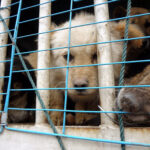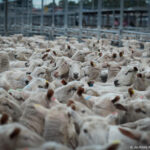Animal cruelty is a heart-wrenching issue that reflects broader social and psychological problems. One particularly alarming phenomenon that has been observed in children is the intertwining of animal cruelty and firesetting. This chilling intersection is not only a cause for concern for animal advocates but also raises significant implications regarding child psychology and societal responsibility.
Understanding this phenomenon requires delving into the psychological profiles that typify children who engage in such behaviors. Animal cruelty, in this context, can manifest in various forms, from overt abuse to neglect. Similarly, firesetting, usually symptomatic of deeper emotional disturbances, indicates a troubling impulse control issue. The presence of both behaviors in one individual often signals a confluence of underlying factors that must be unraveled.
The motivations behind these behaviors can be varied. In some cases, children may engage in acts of cruelty towards animals or turn to firesetting as a misguided expression of power or control. This can stem from feelings of helplessness or frustration in their own lives. For others, the thrill associated with destruction—alluring in its ambiguity—may drive them to harm innocent beings or set fires. Often these actions serve as misguided attempts to seek attention or communicate their distress in their environments.
Empirical research underscores the significance of early childhood experiences. Many children who display tendencies toward animal cruelty and firesetting have endured adverse experiences, such as abuse, neglect, or exposure to violence. These early interactions can warp a child’s perception of empathy, leading to a normalizing of harmful behaviors toward those perceived as weaker, including animals. The implications of such traumas extend beyond the individual, creating a ripple effect that can influence familial and societal dynamics.
Furthermore, the duality of firesetting and animal cruelty may reflect a broader psychological disorder known as conduct disorder. Conduct disorder embodies a pattern of antisocial behaviors that violate societal norms. Children who grapple with this issue may engage in deceit, aggression toward people, property, or animals, and may lack remorse for their actions. The manifestation of conduct disorder at an early age is a red flag that necessitates timely intervention and support to redirect such trajectories before they escalate into adulthood.
Tragically, the consequences of animal cruelty extend beyond the immediate act. Animals suffering from abuse can experience profound physical and psychological effects, resulting in a wide range of behavioral issues. More alarmingly, studies have shown that early involvement in animal cruelty is a strong predictor of future violent behaviors toward humans. This bleak trajectory necessitates immediate attention from both mental health professionals and child welfare organizations.
Effective intervention strategies are imperative. Observations of the child’s home environment, community involvement, and engagement in therapeutic programs can vastly improve outcomes. An educated, empathetic approach focused on fostering emotional intelligence can yield positive changes. Developing empathy for living beings is crucial in interrupting the dangerous cycle of violence and aggression.
Education plays a fundamental role in addressing animal cruelty and firesetting in children. Programs focused on humane education can make a significant impact, engaging children in conversations about empathy, responsibility, and respect for all living beings. Such educational frameworks can instill the value of kindness toward animals and discourage harmful behaviors. Innovative community outreach programs can further bolster these efforts, creating a network of support and resources for families grappling with these complex issues.
Moreover, dialogue surrounding animal cruelty must evolve to include understanding and addressing mental health concerns. By promoting mental health resources, parents and educators can help children articulate their feelings without resorting to destructive behaviors. Psychological support must be accessible, reducing the stigma associated with seeking help. Through such comprehensive strategies, communities can foster healthier environments wherein children learn to respect and protect rather than harm and destroy.
A collaborative effort encompassing educators, mental health professionals, animal welfare organizations, and parents is essential to combat the intertwining issues of animal cruelty and firesetting. When communities unite to foster discussions on mental health and empathy toward animals, a significant cultural shift is possible. Efforts should pivot towards recognizing the signs early, ensuring that children receive the support and understanding necessary.
In conclusion, the complex relationship between animal cruelty and firesetting in children deserves thorough exploration and prompt action. Understanding these behaviors not only sheds light on individual psychological struggles but also reflects the broader societal issues at play. Addressing the underlying causes of these actions can create pathways for healing, ensuring future generations embrace empathy and kindness toward all living beings. The challenge is significant, but with committed advocacy, education, and understanding, it is a challenge we can rise to meet. Ultimately, compassion in action can cultivate a safe, nurturing environment for both children and animals alike.






